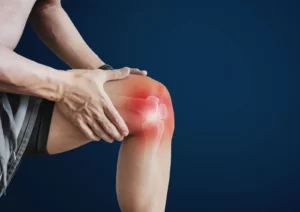Pain is something that affects us all, making it essential to understand what pain management is and the different types of techniques used to treat it. The body’s response to pain can vary greatly from person to person, so it is important to know how pain affects you and the types of pain management available.
In this blog post, we will explore the basics of pain management, including understanding what it is and discovering new techniques for managing the feeling of pain.
What is pain management?
Pain management is the practice of managing and controlling pain levels. This includes identifying the best approach for treating pain, such as through medication, physical therapy, or other forms of treatment. Pain management also involves understanding how to cope with pain, both physically and emotionally.
How Pain Affects the Body
Pain can have a significant impact on your physical and mental health. Pain can cause physical discomfort or even disability if not properly treated. It can also lead to emotional distress, depression, and anxiety.
Types of Pain
It’s important to understand that there are different types of pain, from acute to chronic, and that each individual responds to pain differently.
Acute Pain
Acute pain is a sudden, sharp type of pain that usually lasts for a short period of time. It can be caused by an injury or illness and often resolves once the underlying cause has been treated.
Chronic Pain
Chronic pain is defined as any pain lasting more than three months. This type of pain cannot be cured and is often associated with long-term illnesses or conditions.
If you suffer from chronic pain, it’s important to get checked at One Step Diagnostic for proper diagnosis. This way, you can receive the best treatment plan for you. With proper care, you can manage your pain and live a happy, healthy life.
Neuropathic Pain
Neuropathic pain is a type of chronic pain associated with nerve damage. This type of pain can often be difficult to diagnose and treat as it is typically characterized by burning, tingling, or numbness in the affected area.
Nociceptive Pain
The most common type of pain, nociceptive pain, is caused by tissue damage such as bruises, cuts, or sprains. It is typically sharp and localized at the site of injury.
Types of Pain Management
There are several types of pain management treatment methods available to help manage the different levels of pain. Some common approaches include the following:
Medication
Painkillers or other drugs may be prescribed by a doctor to reduce the sensation of pain.
Physical Therapy
Exercises and stretches designed to strengthen muscles and reduce inflammation can help relieve pain.
Alternative Therapies
Some alternative treatments, such as acupuncture, massage therapy, and aromatherapy, may be helpful in managing pain.
Injections
Injections of steroids or other medications can help reduce inflammation and pain in the affected area.
Nerve Blocks
Nerve blocks are a type of injection that numbs the area around a nerve to reduce pain.
Pain Management Techniques
In addition to understanding the various types of pain, it’s important to know about different pain management techniques. Depending on your individual needs and preferences, there are a range of treatments available that can help manage and reduce your pain levels. These include:
Relaxation Techniques
Relaxation exercises such as deep breathing or progressive muscle relaxation can help reduce pain levels.
Heat and Ice
Applying heat or ice to the affected area can help increase blood flow, decrease inflammation, and reduce pain.
Exercise
Regular exercise can help relieve chronic pain by strengthening muscles and improving range of motion.
Cognitive Behavioral Therapy (CBT)
CBT helps patients identify the thoughts and feelings associated with their pain and develop coping strategies for managing it.
Mindfulness Meditation
Mindfulness and meditation can help reduce stress and anxiety, which can in turn help to reduce pain levels.
Biofeedback
Biofeedback is a technique that helps patients become aware of their body’s response to pain and teaches them techniques to control it.
Hypnosis
Hypnosis can help to control the subconscious mind and reduce pain levels.
Benefits of Pain Management
By understanding the benefits of pain management, individuals are better able to make informed decisions regarding their treatment plan and manage their pain more effectively. Pain management is a vital part of living with chronic pain and can help to improve quality of life, reduce the need for medication and improve physical functioning.
Improved Quality of Life
One of the most important benefits of pain management is an improved quality of life. When chronic pain is managed properly, it can help reduce stress, anxiety, and depression. This in turn can lead to an overall improved mental wellbeing.
Additionally, it can help reduce physical limitations that may have been caused by the pain, allowing individuals to return to activities they once enjoyed.
Improved Mobility
Chronic pain can cause stiffness and soreness in the body, which can make it difficult to move. Pain management techniques such as physical therapy, stretching, and exercise can help reduce these symptoms, making it easier for individuals to stay active.
Reduced Risk of Injury
When pain is managed properly, it can help reduce the risk of injury, as individuals are better able to move and perform activities without putting too much strain on their bodies. Furthermore, it can help reduce the risk of further damage that may be caused by continuing to push through pain.
Reduced Need for Medication
Managing pain through exercise, stretches, and other techniques can help reduce the need for medication. This reduces the risk of side effects that may be associated with certain medications, as well as reducing the amount of money spent on prescriptions.
Improvised Physical Functioning
Pain management can help improve physical functioning by reducing pain levels and increasing range of motion. This, in turn, can lead to better performance when participating in physical activities such as sports or exercise.
Improved Mental Health
Chronic pain can have a significant impact on mental health, leading to depression, anxiety, and other mental health issues. Pain management techniques can help reduce the severity of these symptoms, reducing stress and improving overall wellbeing.
Learn to Manage Your Pain
Pain management is an important part of overall health and wellbeing. There are many types of pain management techniques available, including deep breathing, exercise, meditation, and hypnosis. These techniques can help improve physical functioning, reduce the risk of injury and further damage, and reduce the need for medication.
Moreover, they can help to improve mental health by reducing stress and depression. By understanding the benefits of pain management and talking to your doctor about your treatment plan, you can manage your pain and live a happy, healthy life. Contact One Step Diagnostic today and learn how to properly manage pain.




